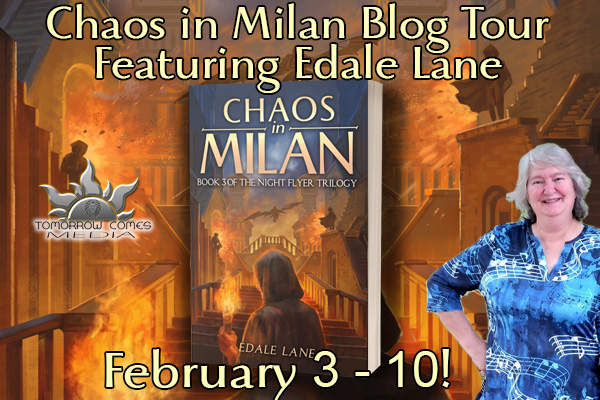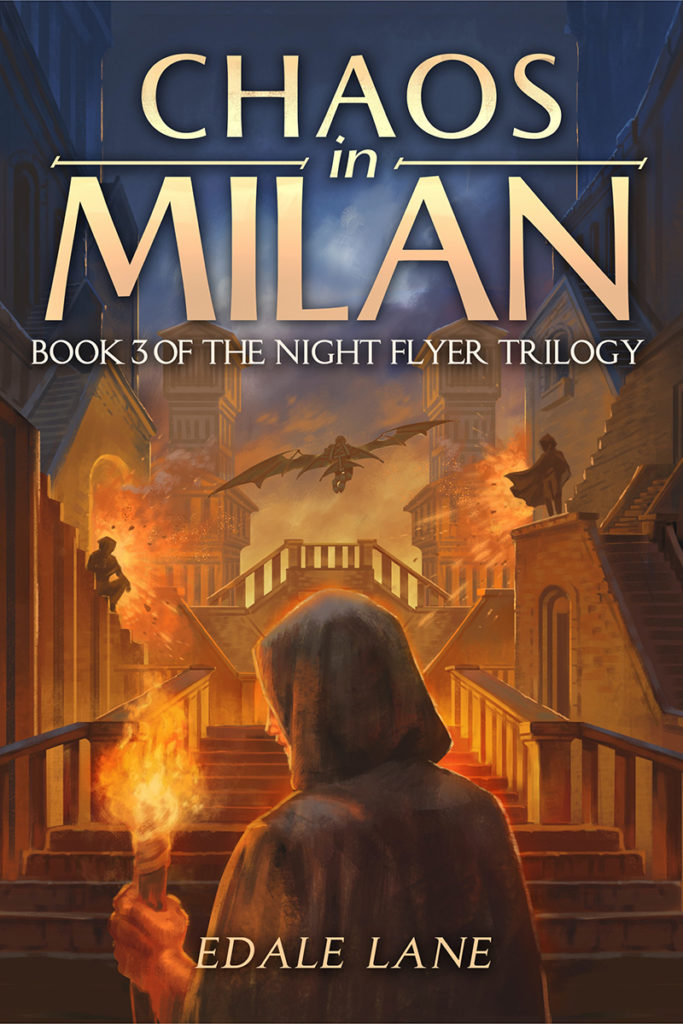
From our friends at Seventh Star Press: Edale Lane is the author of an award winning 2019 debut novel, Heart of Sherwood. She is the alter-ego of author Melodie Romeo, (Vlad a Novel, Terror in Time, and others) who founded Past and Prologue Press. Both identities are qualified to write historical fiction by virtue of an MA in history and 24 years spent as a teacher, along with skill and dedication in regard to research. She is a successful author who also currently drives a tractor-trailer across the United States. A native of Vicksburg, Miss., Edale (or Melodie as the case may be) is also a musician who loves animals, gardening, and nature.
My Writing Process – from research to manuscript to editing
A lot of work goes into writing a novel; some may even say blood, sweat, and tears. And there are as many successful ways to approach and carry out this momentous labor of love as there are authors who endeavor in the process. I will give you a brief look at the methods I use.
Which comes first—the plot, the characters, the setting, the theme, or do they just all meet somewhere in the middle? When I wrote Heart of Sherwood, the idea that popped into my head was to write a gender-bent version of the Robin Hood story, and all the vital elements were there from the conception. For the Night Flyer Trilogy, I’d have to say it was the setting paired with the superhero element. I wanted to write a story that was unique, with a seldom-used era and location. While some novels are set in Renaissance Italy, they are few and far between compared to Medieval, Regency, Old West, World War II, etc. I began to think, what if there was a kind of “Batwoman” who lived in the time of Leonardo da Vinci? What inventions could she come up with? What bad guys might she face?
That led me to conceptualize the characters of Florentina, Madelena, and Alessandro, but before I could begin I needed to research to discover exactly where and when the action would take place. I knew Florentina was a former student of da Vinci and chose Milan because of the wealth of its merchant class, as well as being a city da Vinci lived in for a time. Also to timing, I wanted one of his significant works of art to be completed for my characters to see—the Last Supper—and I planned to include an epic battle scene, so there needed to be a war happening.
When I discovered that the story was too long to fit into one book, I broke it into three acts and started writing book one. Every time I needed to set a scene, there was research: what variety of trees and flowers grew there, what would each person be wearing, what did the furniture look like. I never completed a chapter without half a dozen windows open in my browser to check the accuracy of every detail. The same thing is true with everything I write. The thesaurus is also open as so I can check if a word was in use. Choosing language was easier with Heart of Sherwood because they spoke English (and French, but for simplicity’s sake I stuck with English); for the Night Flyer series I just made sure a word wasn’t too modern while throwing in Italian terms of endearment. Writing and researching were an intertwined duo throughout from beginning to end.
Authors have differing methods of planning their books. After conjuring the concept, my next step is to create a notes file. Here I first do character sketches of my primary cast (and add to it when I introduce a secondary character). I like to “see” my players and have an easy reference if I forget a detail about them. They have physical descriptions, but also characteristics, mannerisms, likes and dislikes, so that fully realized people inhabit the pages. Next, I jot down a plot outline which invariably sees tweaks and changes as the story flows onto the pages. (Guess that makes me both a “plotter” and a “pantser”!) I also include historical information, places and dates, etc. on the notes pages. Back in the day, I wrote all of this out in longhand in a notebook and then wrote the manuscript in pencil to make corrections easier. (I REALLY like doing it on a computer much better!)
As I complete each chapter, I send it to my partner and we read over it together. She is good at finding mistakes and makes good observations and suggestions, but I save the in-depth editing for when the manuscript is finished. Not every writer does this, but I find that I finish a novel faster this way. It is easy to get bogged down in editing and when I get on a roll I just want to flow with it.
When all is said and done, I go back one chapter at a time and use an editing program to help me make changes and corrections. While there are a lot of good ones, I use ProWritingAid. There is also checking the manuscript using the search and find word tool to be sure I have spelled all the names the same each time I used them. Spelling is a real Achilles’ heel for me! I also evaluate if a passage is relevant, or if further explanation is necessary, does it need less or more? Is my presentation of characters and language consistent? Can I “see” the action sequences as I read them? And even though my works are historical fantasy, I focus on the question, “Is this believable?” because I want the reader to come away thinking that this could have really happened.
Because of my day job as an over-the-road truck driver, I have limited time to get my book typed up, so I think up everything—characters, action, dialog, climaxes, etc—while I’m driving down the road. I have a voice recorder to take notes on. I will replay a scene repeatedly in my head so that when I park I can type it up fast, except for the time needed to research the details.
So, that’s my current process: create, plan, deviate from plan, then go back and fix what doesn’t work. Hopefully, the finished product is one that will inform, inspire, and delight the reader.

One woman stands between chaos and order – the Night Flyer.
When chaos strikes at the heart of Milan, it is up to Florentina’s alter-ego the Night Flyer to stop it. As Florentina and Madelena’s love deepens, so does the well of danger surrounding them. The race is on to discover the mysterious Shadow Guild and uncover who is behind the deadly rampage, but Florentina’s mission is threatened by a gang of assassins. Can the Night Flyer prevail, or will Maddie’s love be ripped from her arms?
Chaos in Milan is the third book in Edale Lane’s Night Flyer Trilogy, a tale of power, passion, and payback in Renaissance Italy. If you like action and suspense, rich historical background, three-dimensional characters, and a sweet romance, then you’ll want to complete the Night Flyer saga.
Check out the rest of the Chaos in Milan blog tour!
Pick up Chaos in Milan on Kindle, Amazon or Barnes and Noble!
